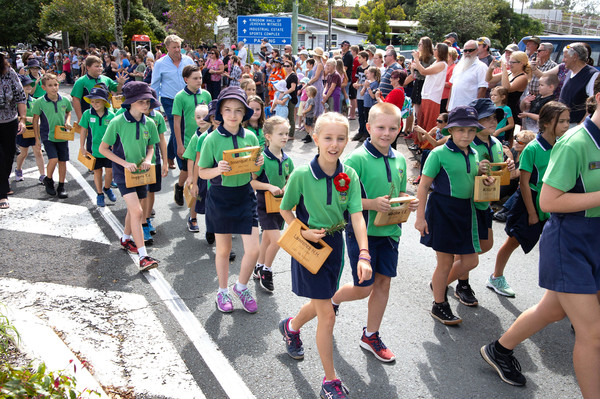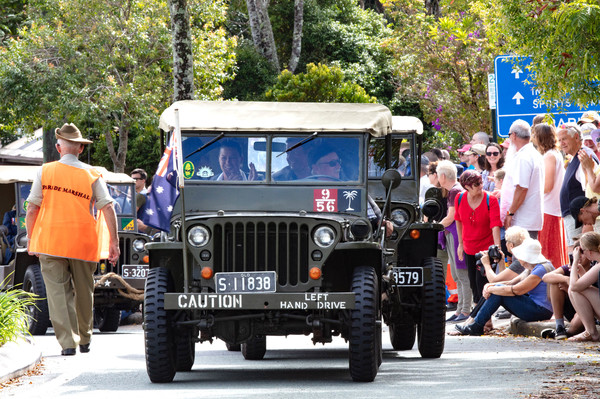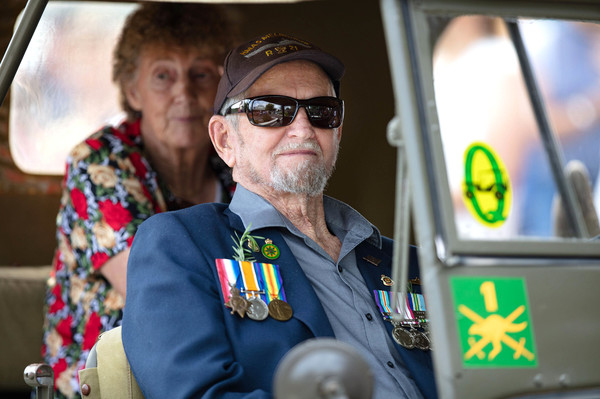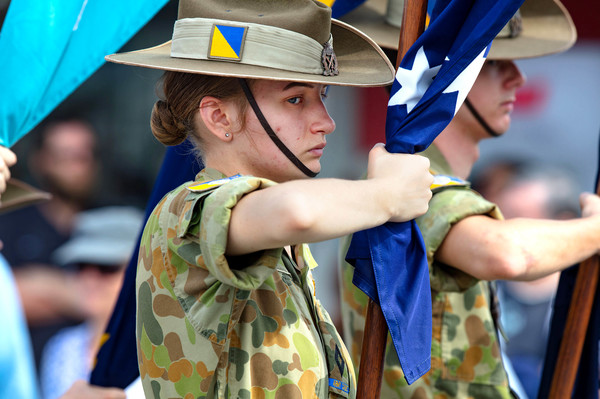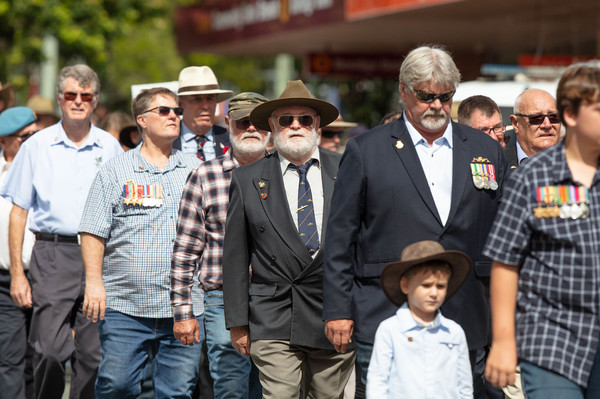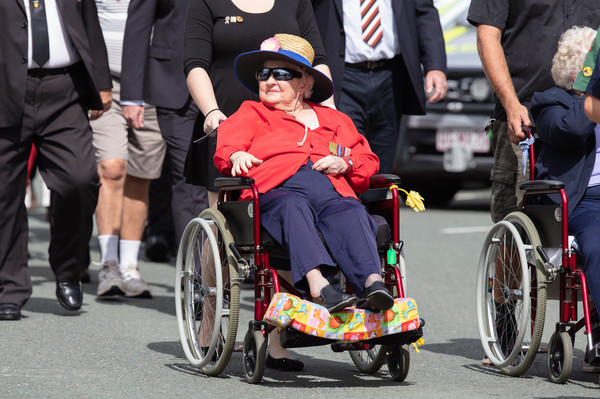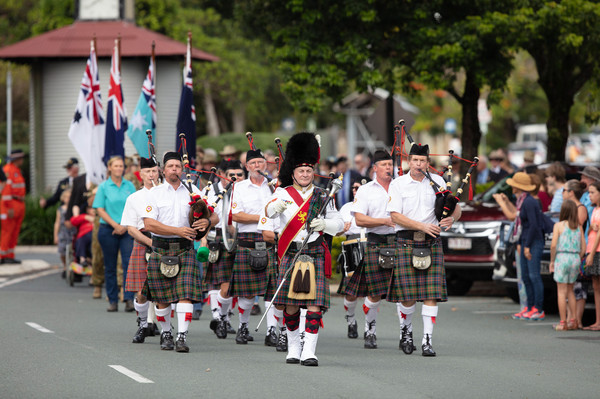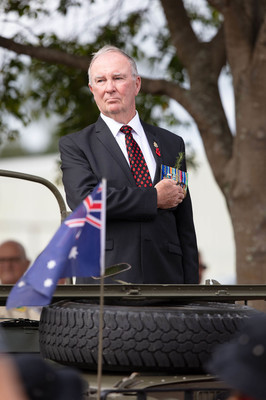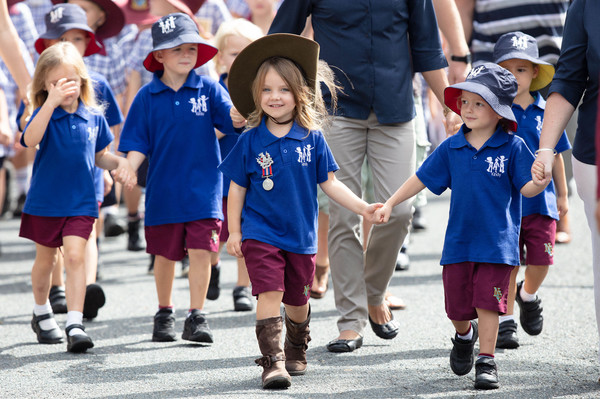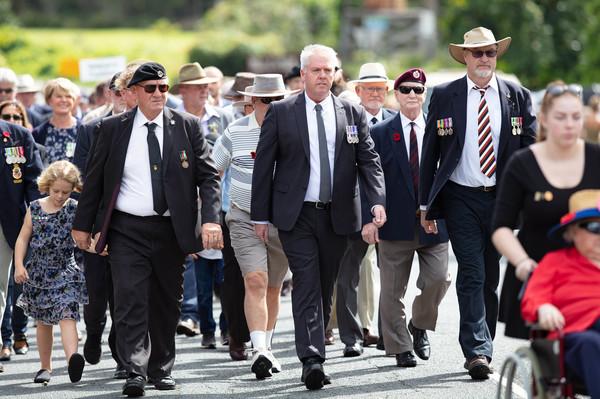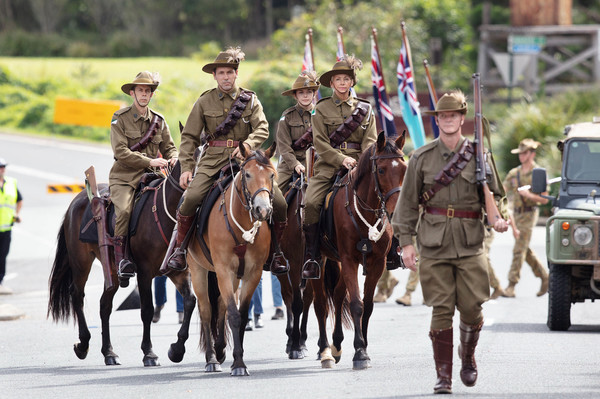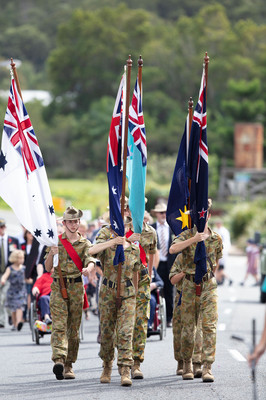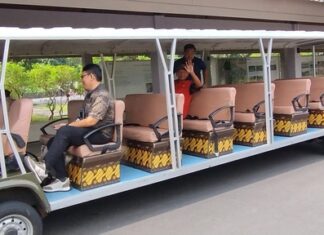More than 2000 people attended both the dawn service and march on Anzac Day at Cooroy and filled the Memorial Hall for the first Anzac Day service since its renovation.
Cooroy-Pomona RSL past president Ian Whisker took the salute and guest speaker Sue Porter, a British Army nurse with the Queen Alexandra’s Royal Army Nursing Corps for 10 years, spoke to the crowd about the role of Australian military nurses since 1900. Sue has seen her fair share of army life after serving in Britain, Germany and completing three tours in Northern Ireland in the 1980s during the conflict known as ‘The Troubles’ or ‘The Northern Ireland Conflict’ where treating victims of gunshot wounds was common. She also served in the Falkland Islands where she met her husband, Paul, an Australian Federal Police officer who is currently working in the Solomon Islands to help the country build its police force. Sue was awarded the Campaign Service Medal with clasp and the Australian Red Cross Long Service Medal and has lived locally for the past 16 years.
Since the Boer War in 1900 the role of nurses has had far reaching changes but some aspects have remained unchanged, Sue said.
During the Boer War nurses spent a great deal of time cleaning buildings and making them fit for use as hospitals while over 100 years later Army nurses in Rwanda and Banda Aceh did exactly the same.
In every campaign and on every deployment military nurses have been renowned for their ability to make do.
60 Australian nurses scattered throughout south Africa during the Boer War had expected to tend men wounded in battle but much of their time was taken up caring for sick particularly typhoid patients. Water was contaminated, disease rampant and conditions in the hospitals unsanitary.
During WWI more than 3000 Australian women volunteered to serve as nurses with the Australian Army Nursing Service, the Red Cross and Queen Alexandra’s Imperial Military nursing Service.
They embarked on the first convoy of ships bound for Egypt in November 1914 and treated the wounded from Gallipoli on hospital ships.“I had two small wards to look after with about 250 patients with one orderly and one Indian sweeper,” one nurse recorded. “The work was constant as the wounded were brought aboard as much by night as by day.”
The conditions on the western front were also dire. Those stationed at casualty clearing stations in France and Belgium often faced dangerous circumstances and were exposed to gas and bomb attacks. Some 5,000 Australian nurses volunteered during WWII, serving across the Middle East, Mediterranean, Britain, Asia the Pacific and Australia with the Royal Australian Air Force Nursing Service and Royal Australian Navy Nursing Service.
From October 1942 Papua New Guinea was considered safe enough for servicewomen so nurses were posted to a hospital at Seventeen Mile near Port Moresby where they treated some of the wounded from the Kokoda campaign,
The hospital lay underneath the flight path of the Japanese bombers.
On one occasion bombs were dropped on the hospital but miraculously no lives were lost. Living conditions were very primitive and uncomfortable. Many times, the hastily erected tents had to be moved due to flooding. Everyone learned to live with mud, canvas stretchers, packing cases, mosquito nets and the wearing of gumboots to the showers.In 1950 when the Korean War broke out 153 Australian nurses were sent to serve mainly in Japan but also in Korea. They treated the wounded and a wide variety of ailments brought on by the summer heat, harsh winters remote mountain fighting and trench foot.
Conditions were harsh, basic supplies like medicines, boots socks and blankets were hard to acquire and improvisation was essential to maintain even basic levels of sanitation and comfort.
Australian service nurses have worked on military and humanitarian operations across the world in Vietnam, Iraq, Cambodia Somalia, Rwanda Bougainville East Timor the Solomon Islands and Afghanistan tending the sick and wounded and local people affected by war and natural disaster.


